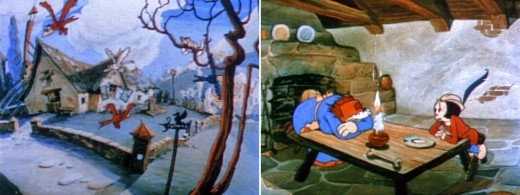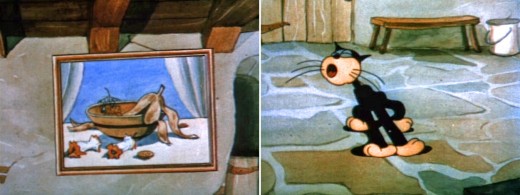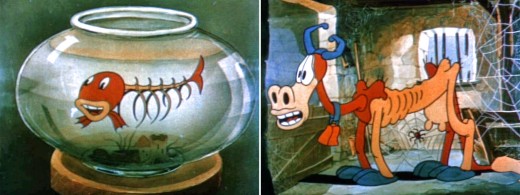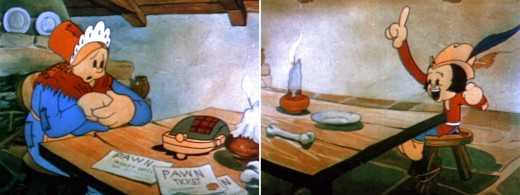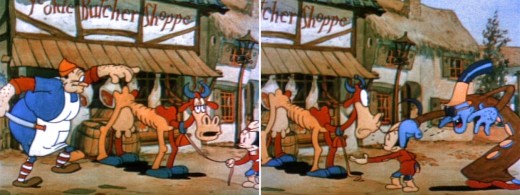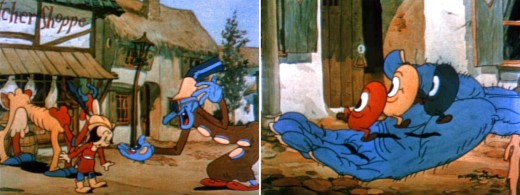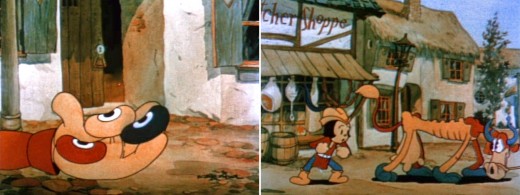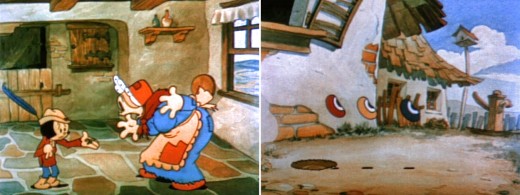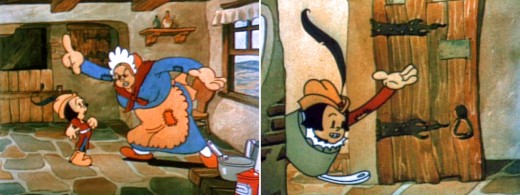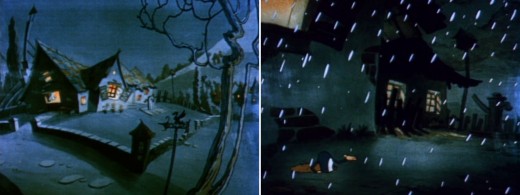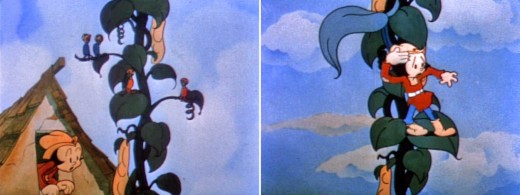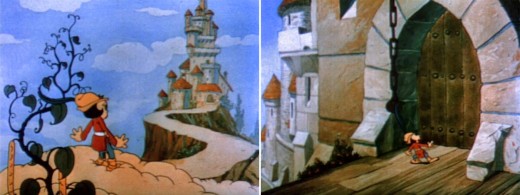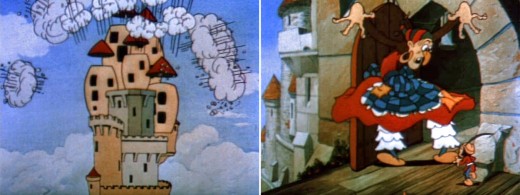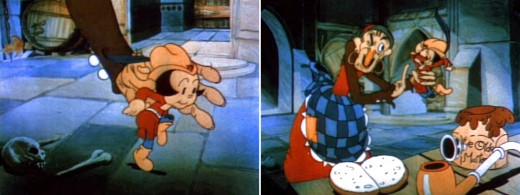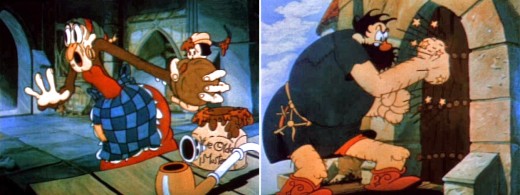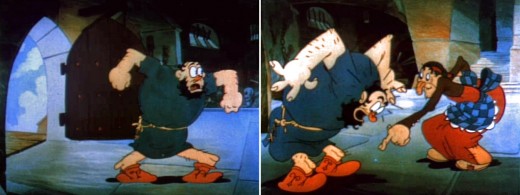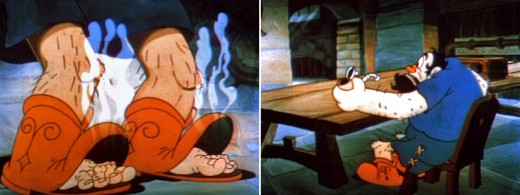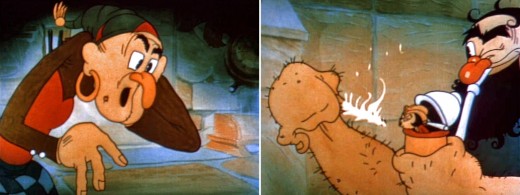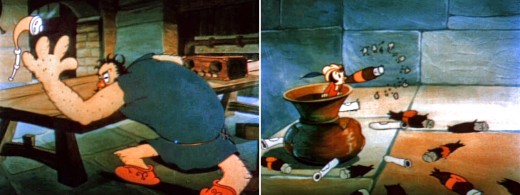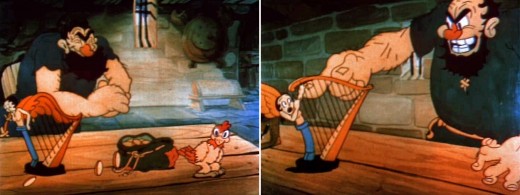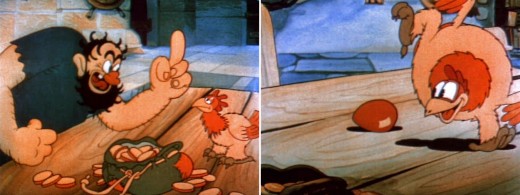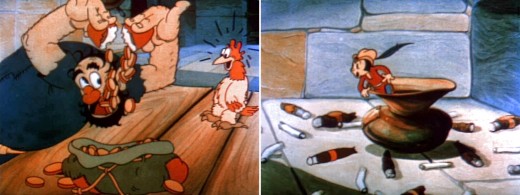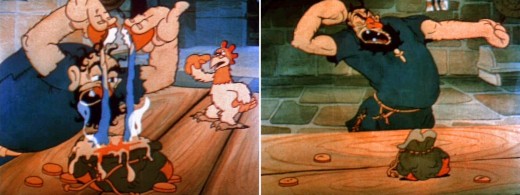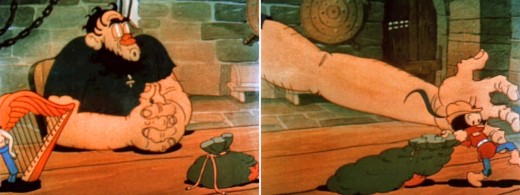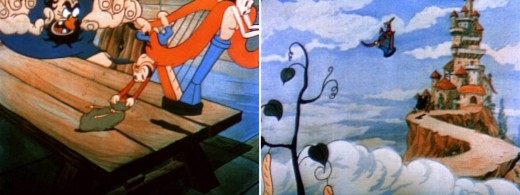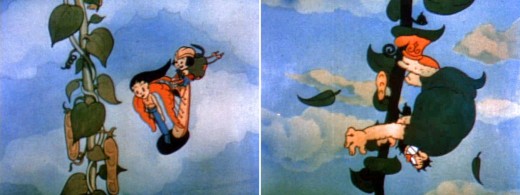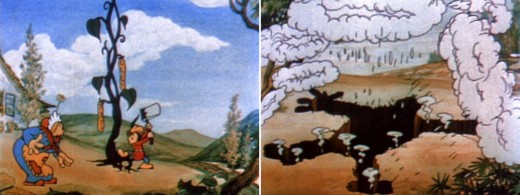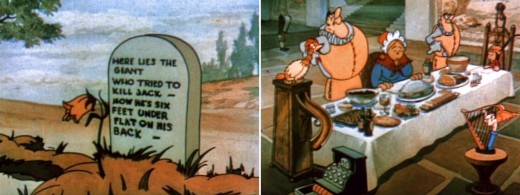Monthly ArchiveJanuary 2009
Animation &Frame Grabs 01 Jan 2009 09:09 am
Beanstalks
- For New Year’s Day, I’m going to go back to the beginning. My beginning – or at least the day I think I truly came to understand what animation involved and how much I really loved it.
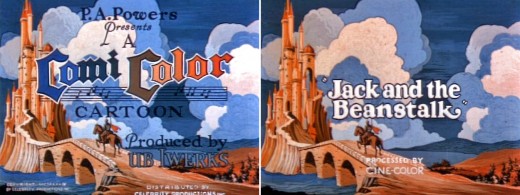
(Click on any image to enlarge.)
I was 12 and had saved my entire summer savings working as a delivery boy for a pharmacist not far from my home. All I made was tips, and the summer had brought me a full $30.
I wanted a projector to watch films. If I was going to make cartoons, I had to have a projector. (Who thought about having a camera to watch them!)
My mother sat down with me – we lived in the Inwood section of far upper Manhattan. She gave me a home-drawn map of the city and told me how I could get there by train. On my own, I took a subway trip to 42nd Street and headed for Peerless Cameras. This was a camera store near Grand Central which would later merge with Willoughby to become Peerless-Willoughby.
They had used 8mm projectors (before the invention of super 8 ), and I intended to go home with one. I did – $25.
Of course, I needed something to project, and Peerless had a VERY LARGE section of entertainment films – 8mm & 16mm. Castle Films distributed many of the Ub Iwerks shorts (most were B&W prints.) They were cut down a bit from the full film, and title cards were edited into them. Obviously, the 8mm projectors and films were silent back then (we’re talking about 1959.)
I’d known the name of Ub Iwerks since I was 8. He was as close to an animation hero as I could muster at that young age. I’d read all about him and knew of the period when he’d had his own studio. There, in Peerless, was Jack and the Beanstalk, and this was the first film I bought.
I felt absolute delight watching that film an endless number of times. The film was, as I said, in B&W, but this actually enhanced some problems old Ub had faced when he started out.
The color paints, for example, weren’t so smooth to lay down. The hand of the bean-seller streaked like crazy and was more obvious in the B&W version. The same was true of the giant’s hand later in the film. Obviously, any time they mixed white into their colors, they couldn’t get it consistent. Terrytoons had this problem well into the 40′s.
It was fun noticing the many elements that made up the film. There were special effects in the film. I’d known that Iwerks was involved in “Special Processes” at the studio (whatever that was – it had to be effects), so you could look at what he did in his own studio. The dark house in the rain storm, illuminated by the lightning was impressive.
Also, the characters were so wacky, you couldn’t help but be entertained by them. The drawing shifted all over the place, but despite the fact that I noticed this – at the age of 12 – I also knew I didn’t mind. You always knew who the characters were even if they went wildly off model.
Every once in a while, there was a hint of a “multiplane-like” effect. When Jack stepped off the beanstalk and onto the clouds, the cel levels move into a position so that the illusion of depth is attempted. It’s handled nicely, I have to say.
Of course, it was a bit of a surprise to find that I couldn’t stop the projector one frame at a time. I wanted to do more than watch the film over and over and over and over and over (which I did.) Eventually, I got tired of this and started tinkering with the machine. I had to be cautious so as not to jar the bulb which could easily burn out and cost me another five bucks.
There was a framing device on the projector. Sometimes the frame line was in the picture and you had to turn this knob to properly frame the picture. By turning this an ungodly number of times, you could actually advance the frames, but you couldn’t see more than about four frames at a time.
That wasn’t quite good enough, so I ultimately started taking the projector apart. I was able to rework the framing mechanism so it could keep going. I was able to watch the film one frame at a time and truly study the animation.
I can’t tell you how many hours I pored over this film.
There was a scene where the giant watches money falling out of the hen’s golden eggs. His one eye follows the coins down (and later follows the rotten egg leaking into the money bag.)
I remembered this scene well when studying some drawings Tytla had done of Stromboli counting his coins. His eyes are similarly loose as they follow the coins to the table, and I wondered if he had known about this giant animation.
Back then, I wasn’t aware that Iwerks hadn’t drawn the entire film by himself. I eventually came to learn that Grim Natwick pretty much ran the studio for quite some time and was replaced, after he’d left for Disney, by Shamus Culhane.
Years later, when I first met up with Grim Natwick, I told him that this film was the very first animated film I’d studied and studied in my goal of becoming an animator. He didn’t offer much of a reaction.
It was a real treat taking this film apart. I started out knowing nothing and soon learned that animation had many decisions and choices behind it. Even today I get a twinge of excitement when I first look at this short – I’m sure it’s as much nostalgia as anything.
In short, it’s all so much easier today. Get a dvd through the mail, look at it on YouTube. Get an animation program like Flash and wallah you’re an animator. There’s no effort. Maybe there was an advantage to having to make an effort.
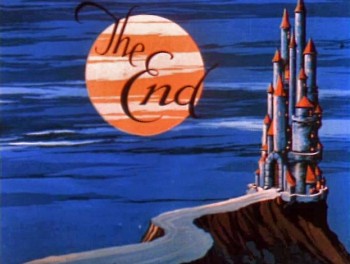
Here’s the link to the YouTube version of the Jack & the Beanstalk.
And here’s the link to vol 1 of The Cartoons That Time Forgot.
Happy New Year
